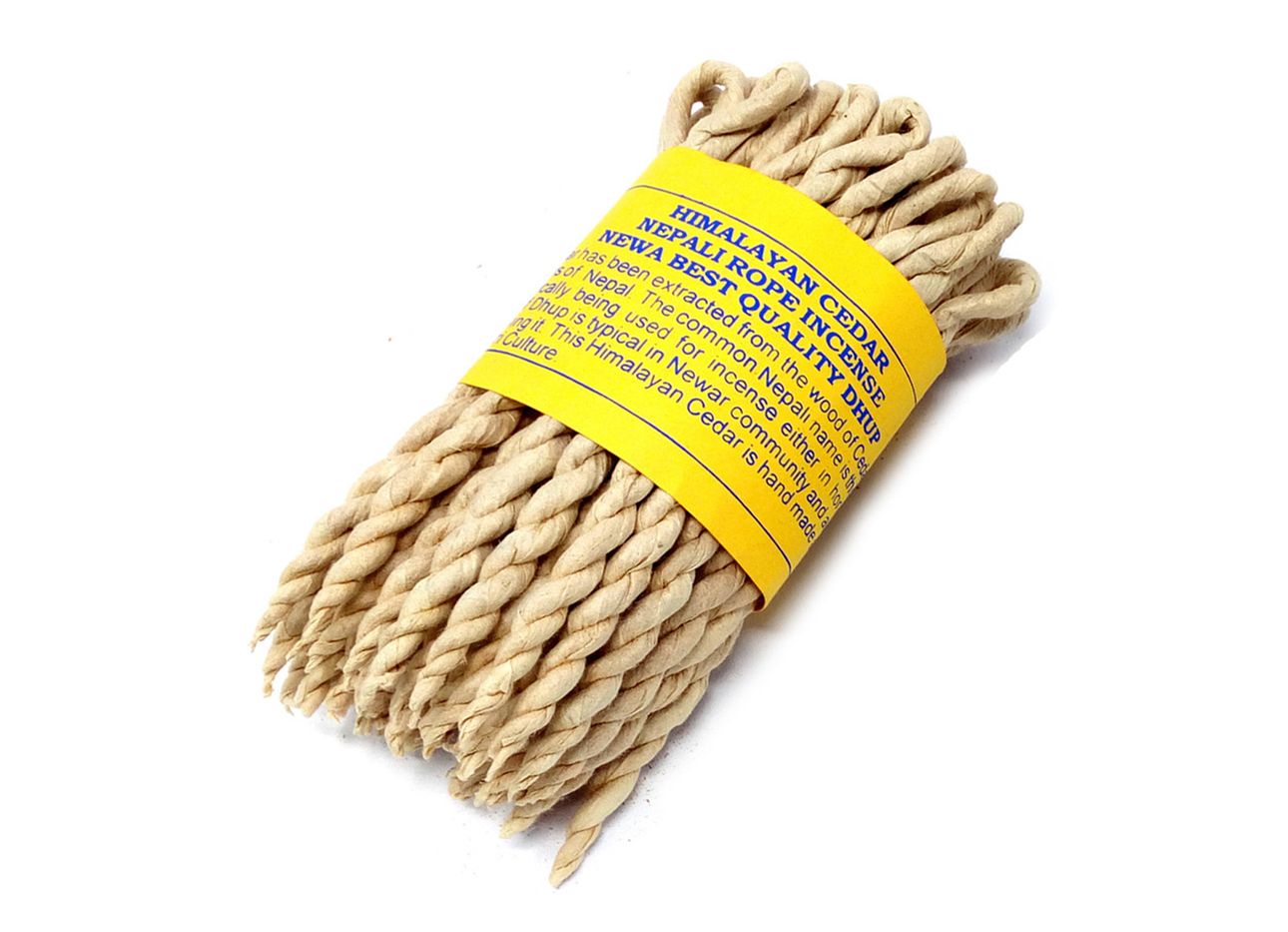
The Perfumed History of Dhup, Nepal’s Traditional Hand-Rolled Rope Incense
In Nepal, where I lived in the early aughts, cultural treasures abound, including seven groups of historic Buddhist and Hindu monuments, palaces, temples, and stupas dappled across the Kathmandu Valley that together form a UNESCO World Heritage Site. It was within these intricately carved buildings that I first smelled the ambrosial aromas emitted by the traditional Nepalese rope incense called dhup (sometimes spelled “dhoop”). Found in nearly every home in the South Asian country, dhup is most closely associated with the Newar people, historical inhabitants of the Kathmandu Valley who are renowned across the Himalayan foothills for their artisanal craftsmanship, which they used to build many of Nepal’s temples. In addition to religious ceremonies, people in Nepal use the incense to calm the soul during meditation, to aid in Shamanic healing processes, and as a natural air freshener.
Dhup, or Newari dhup, is most commonly found in one of three fragrances: Himalayan cedar, sandalwood, or juniper. Despite its enduring omnipresence, many of my thoroughly modern Nepalese friends disdain the incense’s scent, either for its smell alone or as an olfactory reminder of Nepal’s deeply tradition-driven culture, which some feel inhibit the country’s ability to evolve for the future. One of these dissenters apologized for her “possibly sacrilegious” aversion before admitting, “Dhup is absolutely essential to purifying a space before puja!” She was referring to the act of worshiping gods and goddesses in Hindu and Buddhist traditions, which is carried out in a temple or a dedicated room at home. “One of the loveliest things,” she continued, “is when our priest, or whomever is doing the daily puja ritual, walks the dhup around our home and the surrounding spaces to bring good vibes all around.”
Monks historically produced dhup exclusively within their monasteries, but today, various cottage industries generate the substance for local and global markets. Most dhup is currently handmade by women, who sit on the ground and pound dried aromatic herbs, botanicals, and resins into a fine powder. They place the material into thick paper, or lokta, which they gently twist along its length, then double back on itself and twist the two halves together, forming the “rope” look. Artisans typically bundle together some three dozen ropes, measuring around three-and-a-half inches each, and sell the bunches at local bodegas and stalls located near temples. Outside Nepal, the incense is sold in specialty shops and online, usually for less than $8.
To burn dhup, lay it flat on a bed of sand or ash, which allows the entire rope to burn safely and completely. Alternatively, hang it from a rope incense burner, or, as I used to do, make your own by repurposing a wire hanger. Dhup burns in about 30 minutes, but the calming scent lingers much longer.
That lasting aroma makes dhup an ideal companion for long, slow rituals, and also for perfuming my current home in California. I decamped to the other side of the world during the pandemic, but lighting one of these little ropes still has the power, through its strong yet relaxing scent, to transport me instantly back to the Roof of the World. It’s also one of the least expensive, readily available olfactory indulgences around—one that also supports artisans who are part of Nepal’s magnificent bounty of centuries-old cultural treasures.